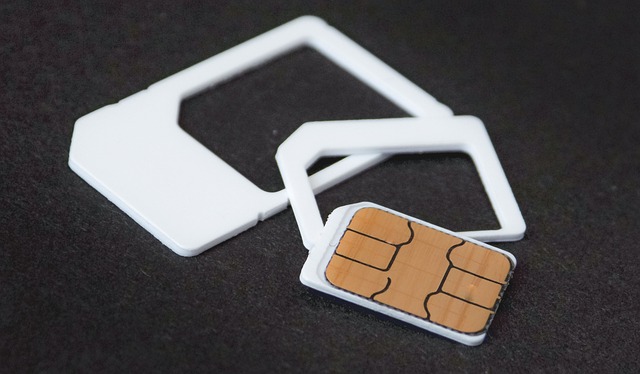Why More People Are Considering Prefab Homes—And How Much They Cost
In recent years, prefabricated homes have been gaining traction as a viable alternative to traditional stick-built houses. These innovative dwellings, constructed off-site and assembled on location, offer a unique blend of efficiency, affordability, and customization. As housing markets continue to evolve, more people are turning their attention to prefab homes as a solution to their housing needs. This article explores the growing interest in prefab homes, what they have to offer, and the costs associated with this modern approach to homeownership.

What Does a Prefab Home Offer?
Prefab homes come with a host of advantages that are attracting an increasing number of homebuyers. One of the primary benefits is the speed of construction. Unlike traditional homes that can take months or even years to build, prefab homes can often be completed in a matter of weeks. This rapid timeline not only reduces labor costs but also minimizes the disruption to the surrounding environment.
Another significant advantage is the quality control that comes with factory production. Prefab homes are built in controlled environments, which means they’re less susceptible to weather-related delays or damage during construction. This controlled setting also allows for more precise measurements and cuts, potentially resulting in less waste and a more energy-efficient final product.
Customization is yet another appealing aspect of prefab homes. Contrary to the misconception that prefab means cookie-cutter, many manufacturers offer a wide range of design options. Homebuyers can often choose from various floor plans, finishes, and features to create a home that suits their personal style and needs.
Why Is There Growing Interest in Prefab Homes?
The increasing popularity of prefab homes can be attributed to several factors. Firstly, there’s a growing awareness of environmental issues, and prefab homes often align with eco-friendly principles. The controlled manufacturing process typically results in less waste, and many prefab homes are designed with energy efficiency in mind, incorporating features like superior insulation and high-performance windows.
Urbanization and the need for affordable housing solutions in densely populated areas have also contributed to the rise of prefab homes. These homes can be an excellent option for infill lots or areas where traditional construction might be challenging or cost-prohibitive.
Additionally, the COVID-19 pandemic has shifted priorities for many homebuyers. The ability to quickly construct a home with minimal on-site labor has become more appealing in light of social distancing measures and concerns about health and safety.
How Much Does a Prefab Home Cost?
When it comes to the cost of prefab homes, there’s a wide range depending on factors such as size, customization, and location. However, many people find that prefab homes can be more affordable than traditional stick-built houses, particularly when considering the reduced construction time and potential for lower labor costs.
| Type of Prefab Home | Average Cost Range (GBP) | Key Features |
|---|---|---|
| Modular Homes | £100,000 - £300,000 | Fully customizable, built in sections |
| Kit Homes | £50,000 - £150,000 | DIY-friendly, lower cost option |
| Container Homes | £30,000 - £100,000 | Eco-friendly, unique aesthetic |
| Panel Homes | £80,000 - £250,000 | Energy-efficient, quick assembly |
Prices, rates, or cost estimates mentioned in this article are based on the latest available information but may change over time. Independent research is advised before making financial decisions.
It’s important to note that these costs typically include the structure itself but may not cover land purchase, site preparation, or utility connections. These additional expenses can significantly impact the total cost of a prefab home project.
What Factors Influence Prefab Home Costs?
Several factors can affect the final cost of a prefab home. The size and complexity of the design are primary considerations – larger homes with more intricate layouts will naturally cost more. The level of customization and the quality of materials chosen also play a significant role in determining the price.
Location is another crucial factor. While the home itself may be built off-site, local building codes, permits, and transportation costs to the final location can all influence the overall expense. Additionally, site preparation, including foundation work and utility connections, can add to the total cost.
How Do Prefab Homes Compare to Traditional Construction?
When comparing prefab homes to traditional construction, it’s essential to consider both upfront costs and long-term value. While the initial price of a prefab home can be lower, especially when factoring in reduced construction time and labor, the real value often lies in the long-term benefits.
Prefab homes are often built to stricter tolerances, which can result in better energy efficiency and lower utility costs over time. The controlled manufacturing environment can also lead to higher overall quality, potentially reducing maintenance costs in the future.
However, it’s worth noting that financing for prefab homes can sometimes be more challenging to secure than for traditional homes. Some lenders may be less familiar with the prefab construction process, which could affect loan terms or availability.
In conclusion, the growing interest in prefab homes is driven by their potential for cost-effectiveness, efficiency, and customization. As more people seek affordable and sustainable housing solutions, prefab homes are likely to continue gaining popularity. While costs can vary widely, many find that the benefits of prefab construction outweigh the challenges, making it an attractive option for homeowners across the UK.




